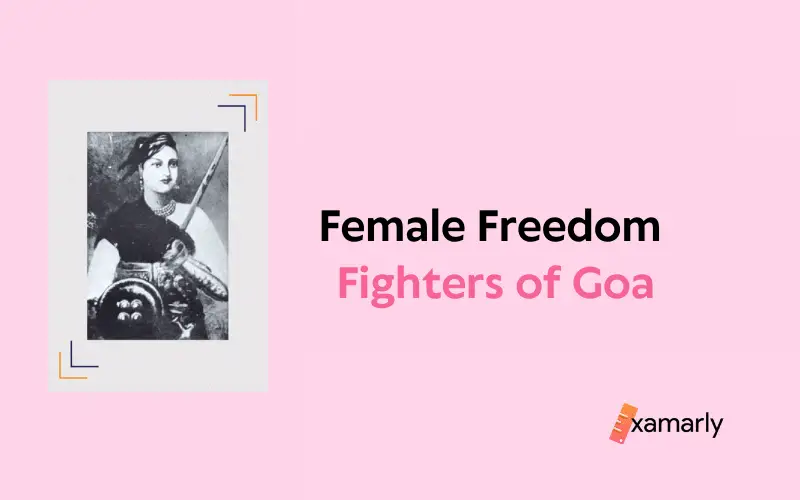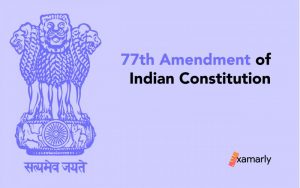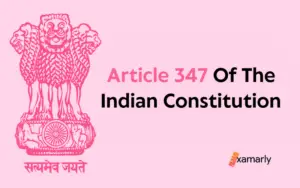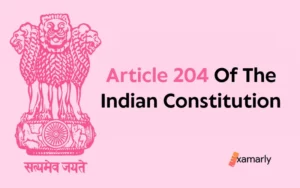Female freedom fighters of Goa have been an integral part of the state’s struggle for independence.
When complete individual freedom was outlawed, it was only natural that the public would rebel against the Portuguese government.
As a result, organizations slowly formed and engaged in nationalist activities. When these events occurred, Goan women also took part and contributed to the liberation of Goa Daman & Diu.
Smt. Pramilabai Kant Jambaulikar was the first recognized female freedom fighter in the context of the Civil Liberties movement.
She participated in a number of programs established by the Goa Seva Sangh in 1945, including meetings, flag-raising events, and the group spinning at her home.
Many young girls and courageous women were inspired to get involved in the campaign for civil freedoms by the actions of the Goa National Congress, Goa Seva Sangh, Gomantakiya Tarun Sangh, and other political revolutionary organizations.
Numerous non-violent actions were taken, including satyagraha, raising the tricolour Indian flag, and handing out pamphlets.
This article shines a light on more unsung female freedom fighters of Goa who aided India’s struggle for freedom.
- Female Freedom Fighters of Goa
- Mitra Bir
- Libia Lobde Sardesai
- Smt Sahodra Rai Bai
- Shanta Hede Desai
- Suryakanti Fal Desai
- Berta De Menezes Braganza
- Dr Beatriz Menezes Braganza
- Sharada Padmakar Savaikkar
- Dr Laura D'Souza Rodriguez
- Conclusion
- FAQs
- Name The Female Freedom Fighters Of India.
- Who Were The Women Who Took Part In The Salt Satyagraha As Freedom Fighters?
- Who Is Regarded As The Quit India Movement's Heroine And What Was Her Contribution To The Quit India Movement Of 1942?
- How did the women's freedom movement in Goa influence the larger independence movement in India?
- What challenges did female freedom fighters in Goa face?
Female Freedom Fighters of Goa
Mitra Bir
Mitra Bir, a Goan freedom warrior and activist for education, was given a twelve-year prison term at twenty-two when the province was still a Portuguese colony. She was wed to the late Madhav R. Bir, a Gandhian and former Goa assembly member.
She eventually established girls’ schools in Verem, Margao, Kakora, and other Goa places, as well as adult and professional education institutions for women.
1978 saw her demise.
Libia Lobde Sardesai
Goa was still fighting for its independence in 1955 and was totally cut off from the rest of the world. Antonio de Oliviera Salazar, the ruthless Portuguese dictator, restricted fundamental civil rights.
Newspapers were prohibited, and satyagraha activities were repressed. Information that would have undermined Portuguese bias was not permitted to surface.
People were shot at gunpoint to put an end to peaceful protests, people lost hope, and public morale began to decline.
This was when a covert underground radio station was established in Amboli, a small town outside of Goa. The station was aimed at providing the people with accurate information about their country’s war for independence.
During the Goa Freedom Movement, Libia Lobo ran the radio programs “Voice of Freedom” for the English broadcast, “Voz de Liberdade” for the Portuguese broadcast, and “Goenche Sadvonecho Awaz” for the Konkani broadcast.
This radio program played an active role in informing listeners and inspiring them to fight for their rights and freedom. According to her, the broadcasts served to spread information as well as boost public spirits by highlighting the support the freedom movement was receiving from other regions of India and the rest of the world.
Libia is known to have made repeated announcements of the ultimatum to the last governor-general of Goa — surrender or liberation forces will invade the region — from this radio station every ten minutes.
Smt Sahodra Rai Bai
Smt Sahodra Rai Bai was born on 30 April 1919. She was a prominent woman freedom fighter and was imprisoned during the Goa Liberation Movement in 1955.
This brave and patriotic woman courageously led the Goa Liberation Movement holding the Indian national flag. Her legacy will never be forgotten.
Smt Sahodra Rai Bai, one of the pioneers of the Goa Liberation Movement, was a strong advocate of women’s rights. During Portuguese rule, women were able to participate in the liberation struggle as the Portuguese abolished polygamy and Sati.
Women were roused to participate in satyagrahas, protests, meetings, and even patriotic discussions in their homes.
Shanta Hede Desai
A nurse by profession, Shanta Hede from Shiroda, was an active underground activist who promoted the freedom struggle.
She would cross the Goa border to go to political gatherings in Belgaum and alert the activists on the other side of the border about arrests in Goa.
This committed freedom fighter was detained, violently abused by the Portuguese Police to obtain information about participants in the independence struggle, and given a 12-year sentence.
Suryakanti Fal Desai
She was an Indian National Congress member. She was offered satyagraha on February 17th, 1955 at Margao under Laxmi Painguinkar’s leadership; she was detained; she received a three-year prison sentence and a 15-year suspension of her political rights.
Berta De Menezes Braganza
Berta was the daughter of Luis de Menezes Braganza and the sister of Dr Beatriz Menezes Braganza.
As a prominent participant in the struggle, Berta spoke out in public despite the restriction on her civil liberties. She strode by her uncle, Dr T. B. Cunha, during speeches and protest marches in South Goa.
In 1958, Berta established a fortnightly in Bombay called “Free Goa,” and she travelled around India calling for military action against the colonists.
She also served as the leader of the Indian National Congress’ Goa branch.
She and Cunha were stopped from speaking at a conference scheduled for June 30, 1946, in Margao.
She fought the cops bravely, and they were both forced into a car and left by the roadside at Chandor.
Dr Beatriz Menezes Braganza
As a member of the Goa Youth League and later the National Congress, Beatriz de Menezes Braganza organized processions in Bombay (Goa). She was a brilliant scientist who earned her M.Sc. and PhD degrees.
Her later affiliation with the Tata Memorial Hospital as a researcher did not give her much time for political action, but she never missed an opportunity to advocate for Goa at conferences she attended.
Sharada Padmakar Savaikkar
Sharada Padmakar Savaikkar was detained by Casmiro Monteiro, a feared police officer when she was 16 years old on charges of killing a member of her village of Savoi-Verem.
Her father and three brothers were all detained and subjected to ongoing abuse. Before being brought before the military court, Savaikar spent two years in jail.
There, she exposed Monteiro’s brutality by displaying to the judge the wounds she received from the beatings.
She lost her teeth as a result of the beating, but she refused to give in to Monteiro’s warnings of “you’ll rot in prison for 14 years” and said she was prepared for it instead. She took on a brave role and upheld her innocence without ever turning on any of her group.
In an ironic and strange twist, when release orders were sent for one Sharad Shirvaikar, the Portuguese police confused the names and released her instead.
Dr Laura D’Souza Rodriguez
She ceased practising medicine in order to join the Goa Freedom Movement. She participated actively in the Bombay Pradesh Congress Committee’s operations.
She presided over the Mumbai chapter of the Goan Women’s Association. She was a fervent advocate for the liberation of Goa and was the editor of English Monthly.
Conclusion
Other names that feature in the struggle for Goa’s liberation include a pantheon of women who actively participated, both within and outside the state – Maria Joaquina Calista Araujo, Srimati Divkar, Lakshmi Bai Paingunkar, Kishoribai Harmalkar, Mitra Bir, Rajani Naik and many more.
Both direct and indirect involvement of these Goan women freedom fighters is shown in Goa’s independence struggle.
There were not many women who actively participated in the fight for liberation, but there were those who did so indirectly by providing food to the clandestine freedom fighters and covertly supplying them with weapons and ammunition.
These forgotten women freedom fighters proved to play a decisive role in the fight for an independent India.
FAQs
Name The Female Freedom Fighters Of India.
Kittur Rani Chennamma, Kamala Nehru (wife of Jawaharlal Nehru), Usha Mehta, Begum Hazrat Mahal, Tara Rani, Sarojini Naidu, Aruna Asaf Ali, Gandhi Buri, and Rani Lakshmi Bai are some of the female Indian freedom fighters who jumped into the freedom fight to free India from the British rule and hence make our nation free from the tyranny so that our future generation can live fearlessly.
Who Were The Women Who Took Part In The Salt Satyagraha As Freedom Fighters?
Women freedom fighters like Sarojini Naidu, Ramadevi Choudhary, Aruna Asaf Ali, Mithuben Petit, Malati Choudhury, and many others took part in the Salt Satyagraha. Mahatma Gandhi organized a widespread civil disobedience movement in opposition to the salt tax levied by the British administration in India.
Who Is Regarded As The Quit India Movement’s Heroine And What Was Her Contribution To The Quit India Movement Of 1942?
Aruna Asaf Ali was a vocal advocate for Indian independence and is best known for raising the Indian National Flag at the Gowalia Tank Maidan in Bombay in 1942 during a Quit India Cause, which gave the movement one of its most enduring images.
How did the women’s freedom movement in Goa influence the larger independence movement in India?
The women’s freedom movement in Goa was part of the larger independence movement in India and inspired other women across the country to join the fight for independence. The participation of women in the Goan freedom struggle challenged patriarchal norms and paved the way for greater gender equality.
What challenges did female freedom fighters in Goa face?
Female freedom fighters in Goa faced numerous challenges, including societal pressure to conform to traditional gender roles, discrimination, and physical violence. Despite these obstacles, they continued to fight for independence and their rights.






